Figure 1: Refinement of Cannabis Products
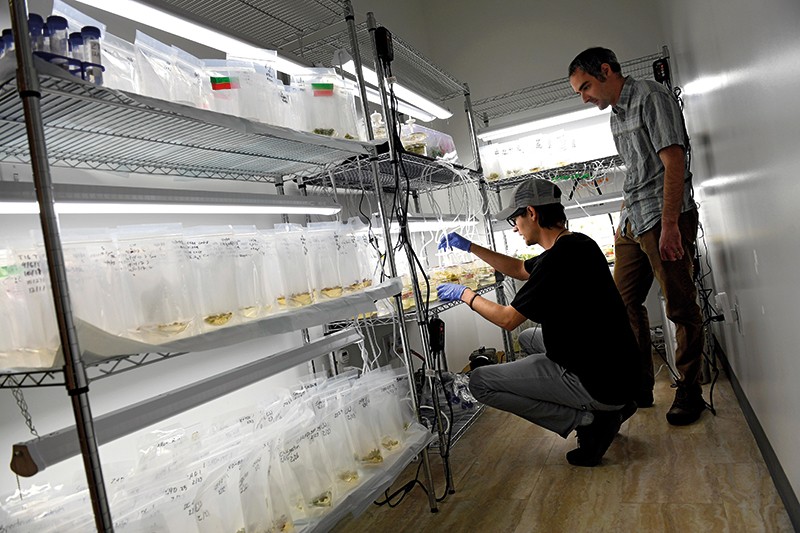
Although marijuana, the cannabis plant with greater than 0.3% THC content, is still federally illegal, it is, as of this writing, medically or recreationally legal in 36 US States. Of the 14 remaining states, cannabis with a THC content lower than 0.3% is legal for medicinal use or for sale to the general public. Nationwide, cannabis products with THC content lower than 0.3%, are generally legal for sale directly to the public in the form of cannabidiol (CBD) over the counter. CBD products can be found in convenience stores, pharmacies, and specialty smoke shops.
Types of Cannabis Occupancies
In Architecture/Engineering/Construction, cannabis projects generally fall into three categories, in increasing levels of technical complexity and design professional involvement:
- Cannabis Dispensaries
- These are buildings or spaces analogous to conventional pharmacies that dispense cannabis products, to either medical or recreational users
- Cannabis Cultivation Farms
- These are indoor facilities and greenhouses that are used to grow cannabis plants. Most cannabis grown in the US is grown inside such buildings that have special lighting, lighting controls, HVAC systems, and access to distribution via vehicles.
- Cannabis Extraction Facilities
- The most complex of the cannabis occupancies, these facilities use specially designed and engineered “extraction” equipment to remove the active cannabinoids from the cannabis plant. This extract is used in a variety of cannabis products, including, but not limited to: edibles, concentrates for “vaping,” RSO, ointments, and other products.
- The materials used for extraction are often hazardous materials, so these facilities require someone with expertise in fire protection engineering, mechanical engineering, and building and fire code consulting to be designed, installed, and certified properly.
Cannabis Engineering Challenges
One of the biggest challenges for AEC professionals to successfully engage and complete a cannabis project successfully is interfacing with the cannabis clientele. The cannabis clientele is generally completely unfamiliar with building codes, building permits, construction, design and construction schedules, and may have a limited technical acumen for understanding the issues their construction projects may face. On the other side, the AEC professionals have a limited understanding of cannabis, the cannabis parlance, the cannabis culture, and some of the specialized steps necessary for permitting the cannabis facility. State and local governments have special licensing requirements and permits that fall outside of AEC activities, but that are necessary for the facility to operate.
Some Basic Cannabis Terms
Familiarity with the cannabis jargon eliminates much of the confusion associated with these two groups interfacing. Below are some terms that are helpful to know when designing cannabis facilities:
- Cannabis: “cannabis” can refer to the “Cannabis Sativa” plant, which includes cannabis with trace amounts of THC or traditional marijuana. It can also refer to the three subspecies of cannabis: cannabis sativa, cannabis indica, and cannabis ruderalis. Sativa is a strain of marijuana that produces a stronger, more uplifting psychoactive effect. In contrast, Indica, is a strain that produces more sedative, relaxing effects.
- Hemp: hemp is cannabis sativa with little to zero THC content, as grown. In other words, a hemp plant grown can be cultivated, processed, and used without having to artificially remove the THC from the plant.
- Terpenes: terpenes are the natural oils from cannabis plants. They are responsible for the flavor, aroma, and some of the medical and recreational effects of the plant.
- Flavenoids: flavonoids are similar to terpenes and give cannabis strains their unique aroma and taste.
- Strain: cannabis plants are similar to domesticated animals that were bred for specific purposes. Each cannabis strain has a unique name and genealogy. Cannabis plants are bred for specific effects and purposes.
- Crude Oil: when the cannabis plant is initially removed of all its oils, including fats, lipids, terpenes, and cannabinoids. This oil has all of the contents of the cannabis plant in liquid form. Rick Simpson Oil (RSO) is synonymous with “crude oil.”
- Cannabinoid: cannabinoids are specific molecules within the cannabis plant that have specific effects as they are naturally present within the plant, and when extracted and isolated from the plant. The two most prominent cannabinoids at this time are CBD and THC. THC has long been known to produce the psychoactive effects of marijuana although additional effects and potential are currently being explored. CBD has many medical applications. An extraction facility typically produces THC isolate or CBD isolate as their end products.
- Distillate: after crude oil is extracted from the cannabis plant, its oils are subject to a series of processes that produce pure THC or CBD, isolated liquids that are then used within vape pens, edibles, or in medical salves. The distillate is comprised almost exclusively of the isolated cannabinoid. The process to extract distillate is analogous to how fermented fruits are distilled into higher concentrations of alcohol.
- Solvent: within extraction facilities, solvents are the gases or liquids that are mixed with the cannabis plant to extract its crude oil. Many solvents are hazardous materials, and that’s why specific professionals are required to ensure the safety of the extraction process and facility in general.
- Control Area: a control area is a space, room, or rooms that is separated from other portions of the building by one hour fire resistance rated construction. Each control area is permitted to contain a certain amount of hazardous materials for storage, closed-use, and open-use.
- Group H Occupancy: within the International Building Code, Group H occupancies are spaces, rooms, or buildings where the amount of hazardous materials is greater than that permitted for an individual control area, or even an aggregate of control areas. Many fire protection and safety provisions are required for Group H occupancies, and they are challenging to design and construct.
There are numerous other terms that are used within the industry, and, indeed, new terms are being generated as new cannabis technologies and products emerge. Learning these terms is helpful, but not essential, for the AEC professional to successfully work in these projects. It is always a good idea to know what is being discussed to ensure no requirements are being overlooked.
Figure 2: A Small Cannabis Extraction Laboratory
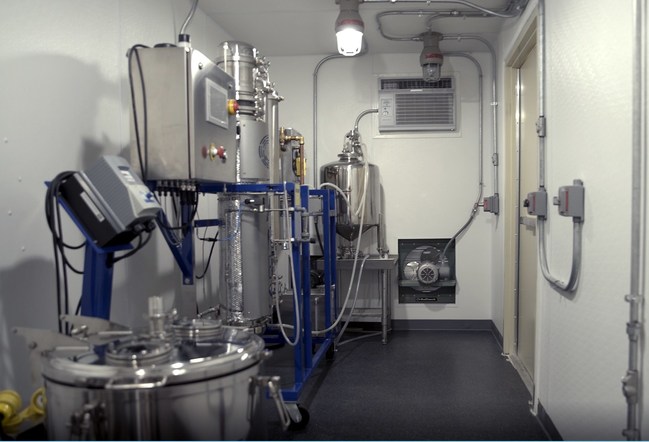
Cannabis Dispensaries
Cannabis dispensaries are mixed Group M (Mercantile, front of store) and Group B (Business, back of store) occupancies. From a building and fire code standpoint, they present minor challenges to compliance that aren’t much different from a regular pharmacy. The biggest difference is that dispensaries are designed to accommodate various security, screening, and monitoring provisions that aren’t present in typical pharmacies.
State Cannabis Authorities typically only issue a fixed number of licenses for dispensaries to operate. Because of this, there are competitive application procedures for prospective dispensary owners to actually own and operate a dispensary. The application process involves a scoring methodology that takes into account applicant financial resources, impacts to the community, security measures, and safety measures. The safety measures are documented in a safety plan that is submitted along with the entire application package. The Safety Plan is required to be prepared by a licensed Fire Protection Engineer, a Certified Safety Professional (CSP), a Certified Fire Protection Specialist (CFPS), or a NICET certified technician.
The Safety Plan considers egress, fire protection systems, fire alarm systems, hazardous materials, disaster preparedness and responsiveness, and other things. Integrating a successful security plan with a code compliant egress plan is one of the unique challenges in ensuring cannabis dispensaries are safe.
Figure 3: Cannabis Dispensaries are Similar to Pharmacies
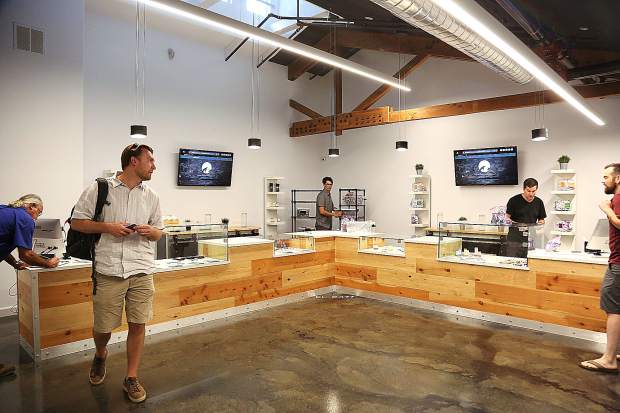
Cannabis Cultivation Facilities
Nearly all of the cannabis grown in the United States is grown indoors. Because of this, there are numerous facilities dedicated to cannabis growth and harvesting. As many states have code exemptions for agricultural facilities, many cannabis cultivation facilities need not be permitted or thus go through the permitting process.
Cultivation facilities may have greenhouses that are exempt from certain building and energy code requirements. Cultivation materials may rack, stack, or otherwise store cannabis plants over 12 feet. If this happens, Chapter 32 of the International Fire Code must be followed for High Piled Combustible Storage requirements. Aside from these specific code concerns, the other code requirement that should be emphasized is determining if the building is within the prescribed building area limitations based on construction type, as the grow field areas can become quite large.
Cultivation facilities have complex lighting, HVAC, and control systems within them. These systems are not relegated by the codes as much as what they are specifically designed for. Many of the electrical and mechanical systems are exempt from the energy conservation code because they are not used for occupants or human comfort.
Figure 4: Cannabis Cultivation Facilities have Specialized Lighting and HVAC
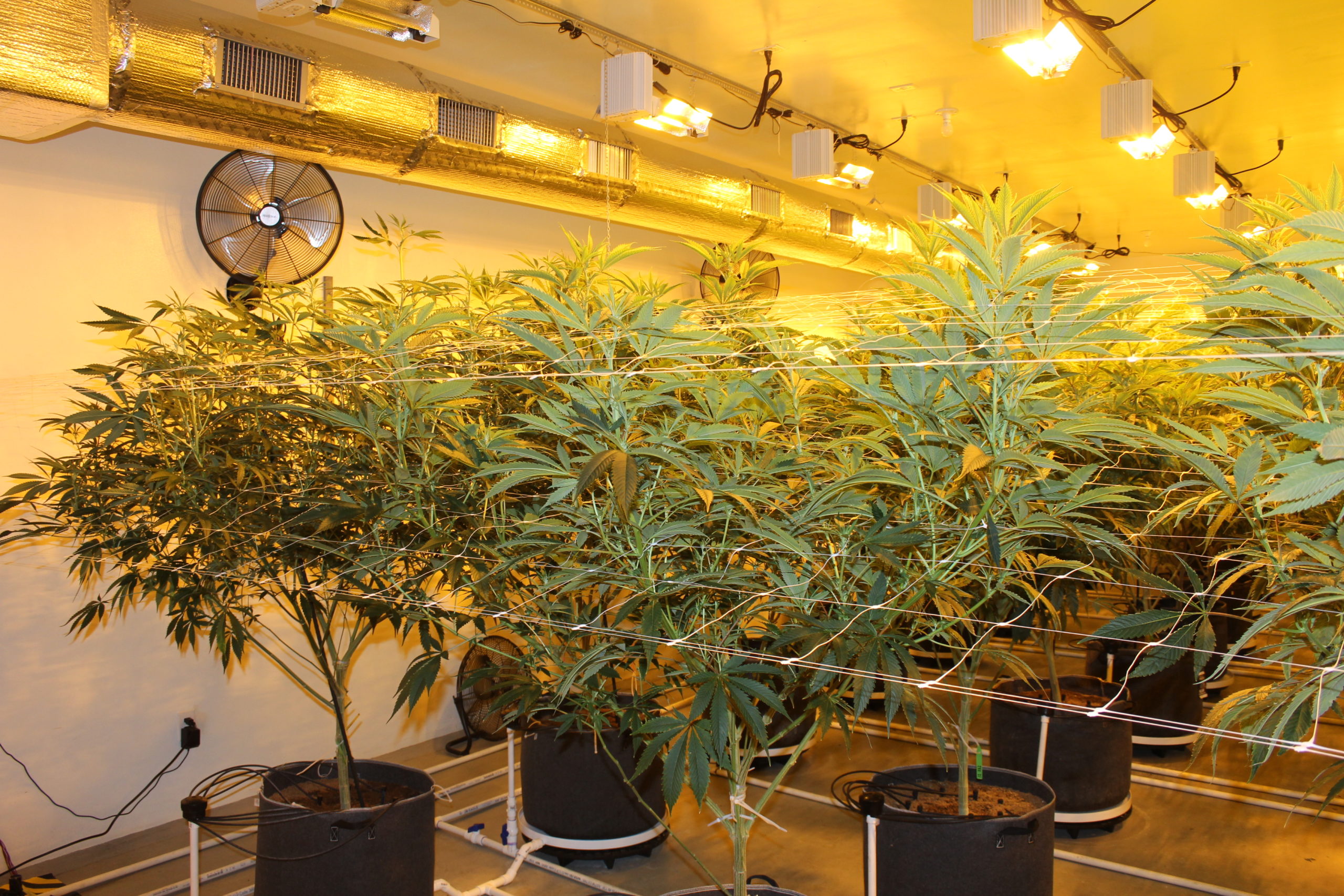
Cannabis Extraction Facilities
Cannabis Extraction Facilities are a type of industrial facility dedicated to extracting various compounds of the cannabis plant, and often further refining them into different compounds that are used directly or indirectly in final cannabis products that are sold at dispensaries or smoke shops. From a building code standpoint, the cannabis extraction facility is similar to a Group F-1 occupancy with some fire and electrical code provisions due to the storing and usage of hazardous materials.
Cannabis Extraction Facilities need to specifically take into account the following details, which are slightly different from typical Group F-1 occupancies:
- The storage and use of hazardous materials: classification of hazardous materials, amounts used, placement within the building, use of control areas, and possible Group H occupancy designations and designs.
- A fire protection engineer is engaged to provide a report analyzing the facility to ensure compliance with these items are realized
- Electrically Hazardous Areas arising from the use of Flammable and Combustible Solvents
- The extraction equipment and what types of solvent it uses dictates, for example, the location of a Class I, Division 1, Group D, electrically hazardous zone.
- The fire protection engineer engaged above takes these areas into consideration for the compliance report
- The extraction equipment
- Solvent types and quantities
- Electrically hazardous areas
- Appropriate placement in the building
- The extraction room
- Extraction rooms are often prefabricated/modular structures that are simply erected on site or site-built.
- There are a number of specialized requirements for the room used to extract oil from marijuana botanicals
- Supply and Exhaust Ventilation
- Fire Suppression
- Emergency Power
- Gas/Vapor Detection
- Emergency Exit Lighting
- Audible and Visual Alarms
- Post Processing Equipment
- Post-processing equipment is equipment used after the initial extraction for distillation, decarboxylation (activation of THCA or CBDA), or other refinements
- Post-processing equipment needs to be analyzed for correct location (they are not normally rated for an electrically hazardous location) and if it needs special approvals
Figure 5: Superfluous Bonding was Required within this Extraction Room
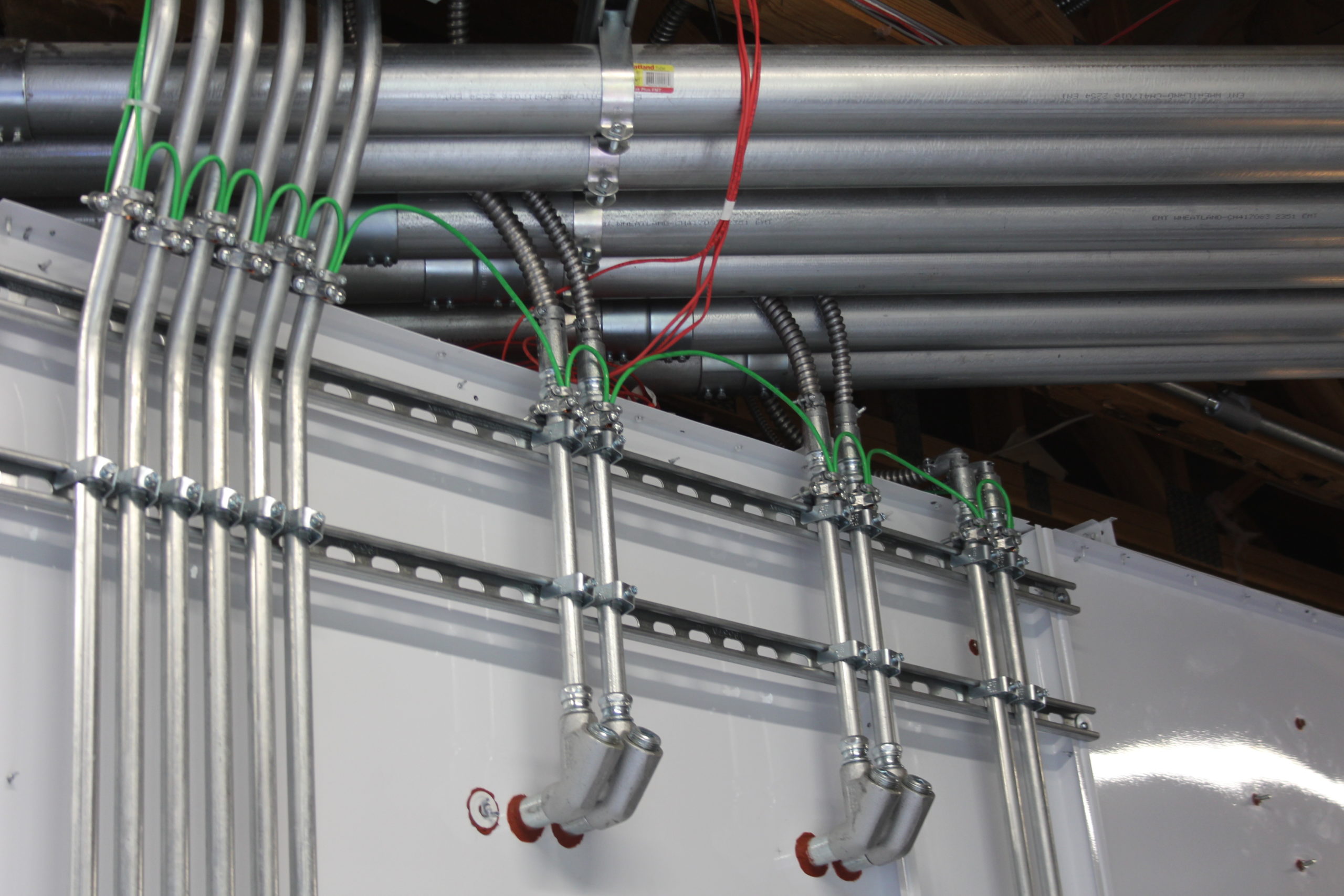
Permit Drawings for Extraction Facilities
The permit submittal for extraction facilities includes some additional documentation related to the licensing of the facility. In addition to this, the submittal must contain the Technical Fire Report (item 1 above), certifications for extraction equipment, and letters of engagements for engineers to inspect the final installation of certain specialized extraction equipment.
The permit submittal set contains the typical architectural, mechanical, electrical, plumbing, and fire protection drawings as a normal building does. The permit team uses the technical data from the extraction, extraction room, and post-processing equipment to provide the requisite utilities to this equipment
Inspection of Cannabis Extraction Facilities
The inspection of cannabis extraction facilities follows the normal schedule and procedures for inspection as any other occupancy, with some additional focus points and inspections. The municipal fire and electrical inspector are often heavily involved in the electrical and fire protection features of the extraction room. Some electrical inspectors may introduce bonding requirements that are beyond the National Electrical Code. Some fire inspectors may have additional alarms or signage added to the extraction rooms. In addition to the municipal inspectors, the state cannabis authority may have their own inspections that are required prior to occupancy.
Finally, licensed engineers may be required to inspect and commission off-site built extraction rooms or extraction equipment. Their approval reports are required prior to the final occupancy permit being issued. These last inspections are referred to as “equipment field verifications. The documents authored by engineers that approve the design of cannabis equipment are referred to as “engineering peer reviews.” The latter is used to perform the former.
Figure 6: Professional Engineer Using a Hot Wire Anemometer to Test Airflow within an Extraction Booth During an Equipment Field Verification
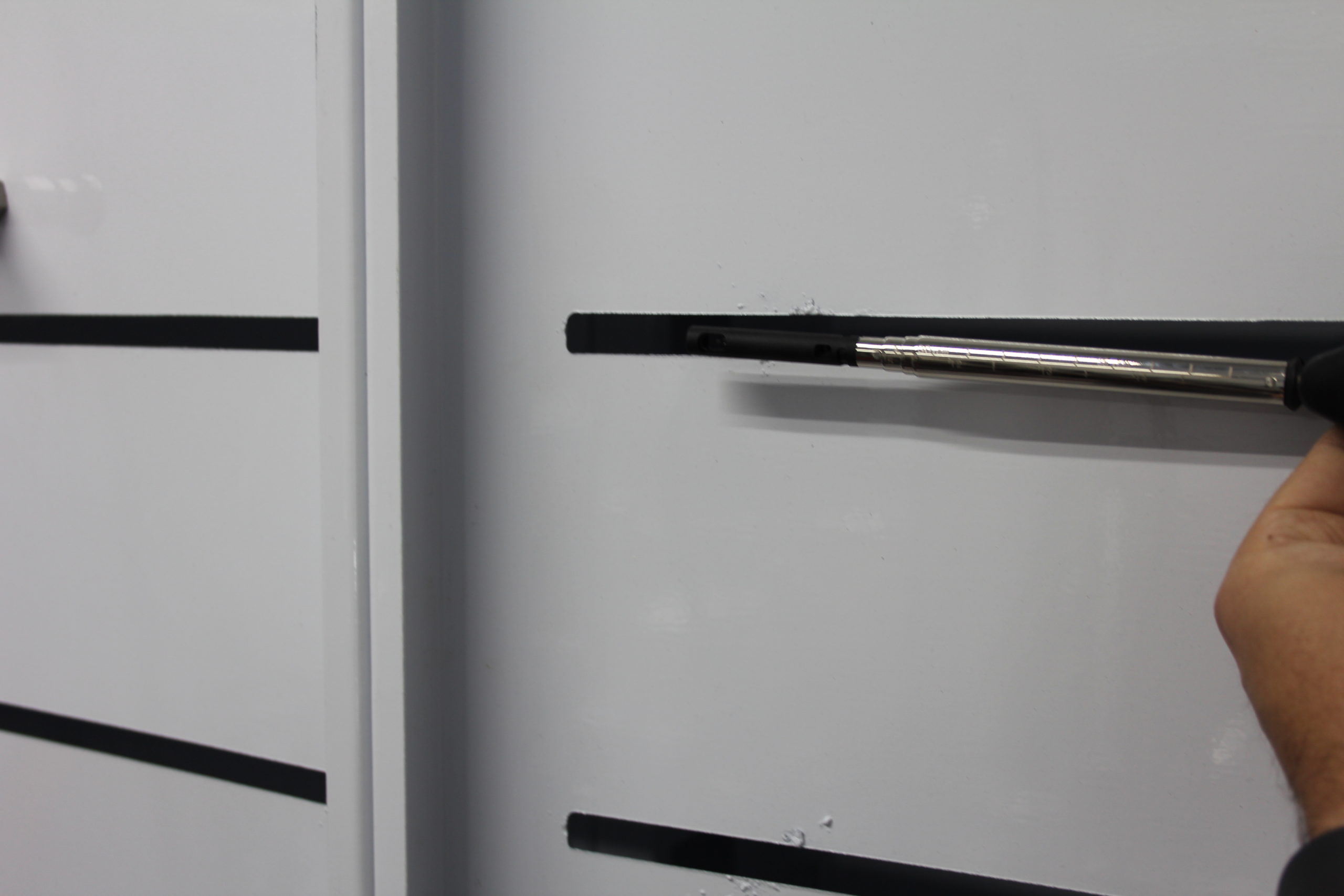
Conclusion
There are a number of special concerns and requirements for designing, constructing, and inspecting cannabis facilities that differ from traditional buildings. However, once these special requirements are known, many professionals can correctly commission these facilities. As the cannabis industry booms across the nation, such professionals will be needed, and they may need to consult with others to harness the expertise that has already been developed within this exciting industry.
-John P. Stoppi Jr. has written a number of Technical Fire Reports for Cannabis Extraction Facilities, written Engineering Peer Reviews for Cannabis Extraction Equipment, provided a number of Safety Plans for dispensaries, has performed engineering field verifications across the country, led permit teams in developing permit packages for extraction facilities, sat on the D37 (Cannabis Engineering) ASTM Team for cannabis extraction. John is enrolled in the Master of Science in Cannabis Medical Science and Therapeutics at the University of Maryland.
